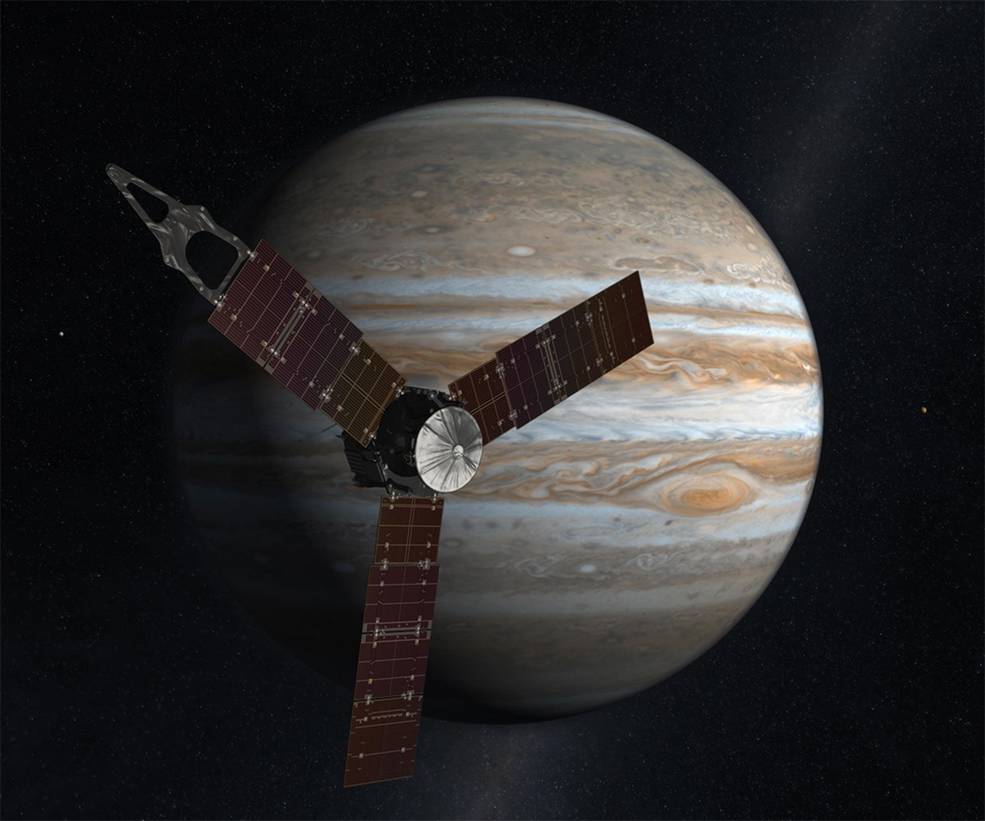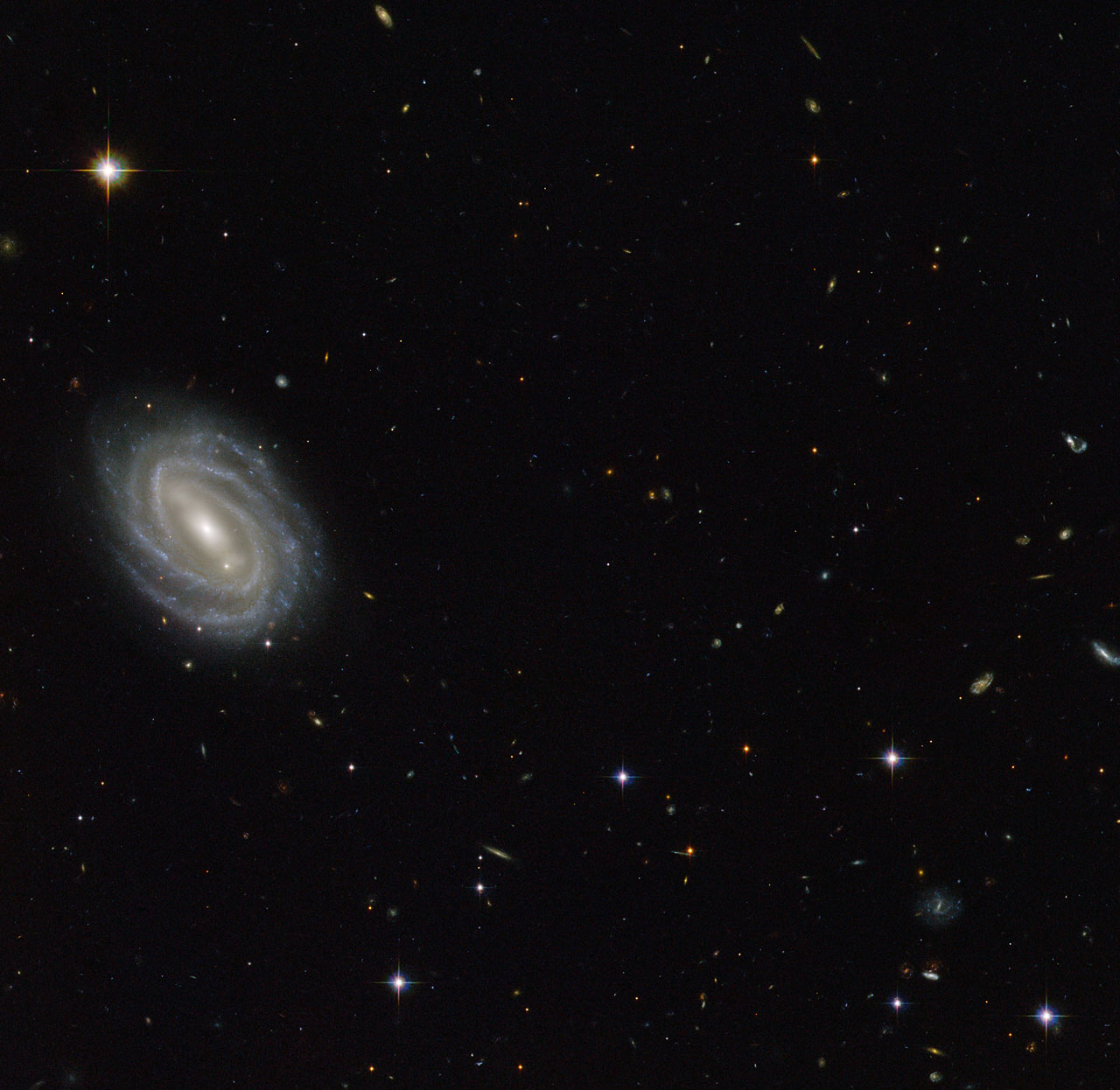The Juno spacecraft currently orbiting Jupiter is appropriately named. In Roman mythology, Jupiter created a veil of clouds to hide his escapades with Io from his wife, Juno, but Juno was able to peer through the clouds and foil his plan.
Juno: Aptly named
The Juno spacecraft, currently on its 11th science orbit[1] of Jupiter, is designed to see through Jupiter’s clouds, revealing secrets of the planet’s atmosphere and interior.
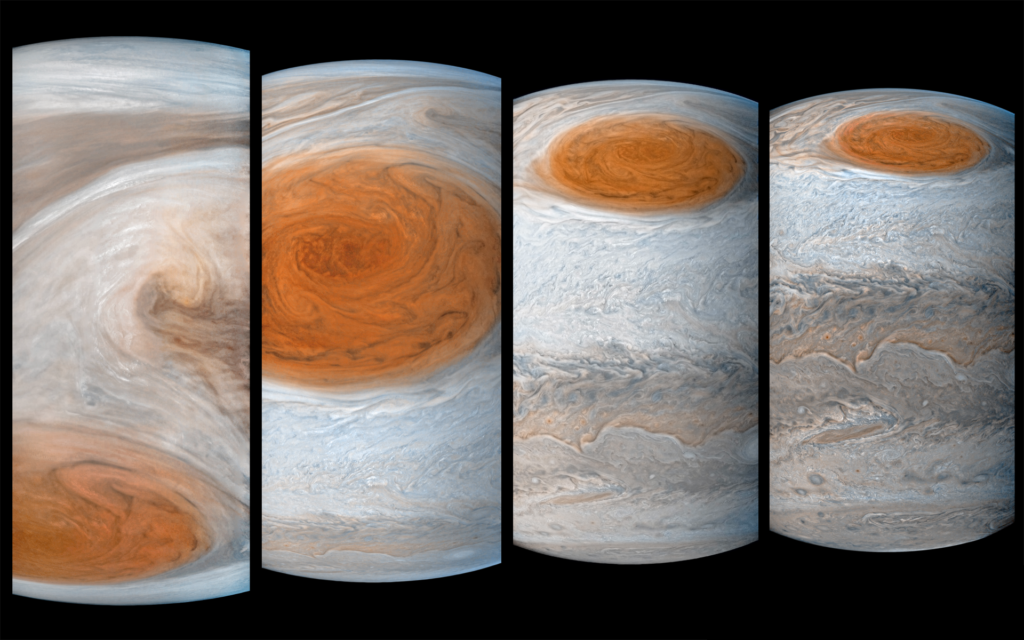
Boldly going on a five-year mission
Juno launched on August 5, 2011, from Cape Canaveral aboard a powerful Atlas V 551 rocket. The spacecraft’s mass (3,267 kg, or about 8,800 pounds) was more than the Atlas V rocket could send to Jupiter on a direct trajectory, requiring deep space maneuvers and an Earth flyby to give it enough additional speed to reach Jupiter.
The Earth flyby on October 9, 2013, accelerated the spacecraft by 3.9 kilometers per second (about 8,800 mph), putting Juno on an intercept course with Jupiter. Juno’s speed after the flyby was 140,000 kmh (about 87,000 mph).
Juno executed a 35-minute orbital insertion burn on July 4, 2016, to decelerate into a capture orbit around Jupiter. Several other maneuvers were required before the spacecraft was positioned for its 14-day-long science orbits.
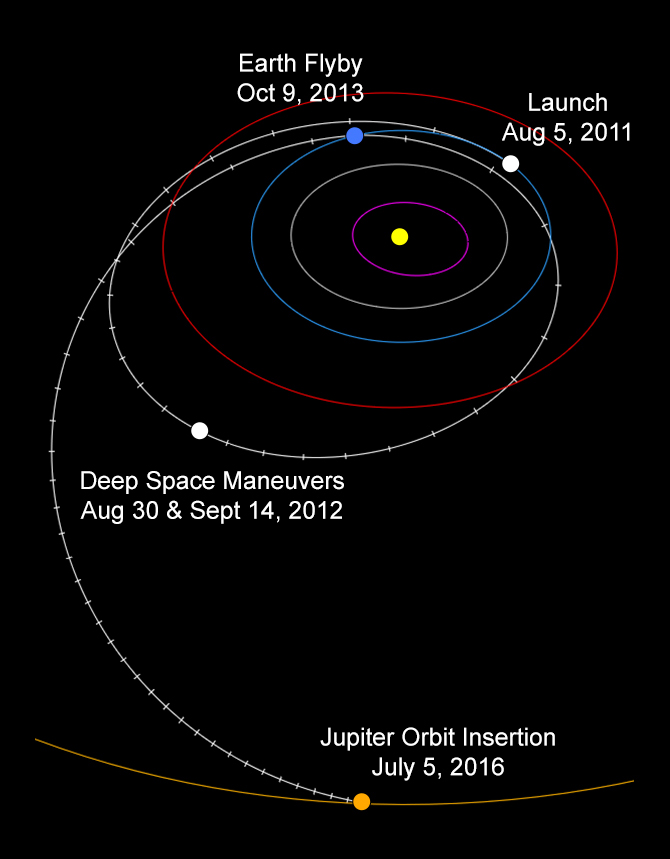
A solar-powered basketball court in space
Juno is a large spacecraft. The main body is 3.5 meters tall and 3.5 meters in diameter. The probe is solar powered. With all three solar panels extended, the spacecraft is 20 meters edge to edge, making it approximately the size of a basketball court.
No other spacecraft has been able to use solar power for a mission so far from the sun. Juno can because it has power-efficient electronics and because space-grade solar cells are much improved over previous generations. Each of Juno’s solar panels is 9 meters long. In total, the three panels provide 60 m² to collect the sun’s power. There are 18,698 solar cells in the three panels providing 14 kilowatts of energy at Earth’s distance from the sun. Jupiter is much farther away from the sun, so sunlight is only 1/25 the intensity reaching Earth. The powerful solar area is only able to generate approximately 500 watts of electricity at Jupiter.
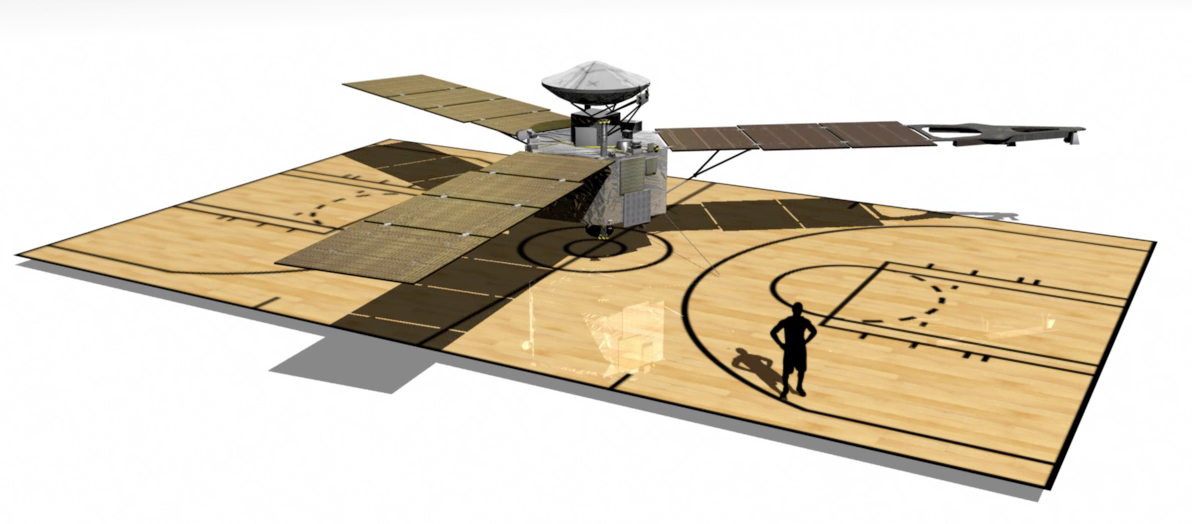
at: https://youtu.be/EOZtqcOMx-A)
One million dental X-rays
Jupiter has radiation zones like the Van Allen belts around Earth but 10 times larger and more intense. Despite having a polar orbit around Jupiter designed to avoid the most intense radiation, the spacecraft will still be subjected to the equivalent of over one million dental X-rays. Due to the amount of radiation the spacecraft will encounter, a special titanium vault was built to shield Juno’s nine instruments and the guidance systems. Even with the shielding cutting down the radiation levels by a factor of 800, the cumulative radiation will still be around the equivalent of 1,250 dental X-rays.
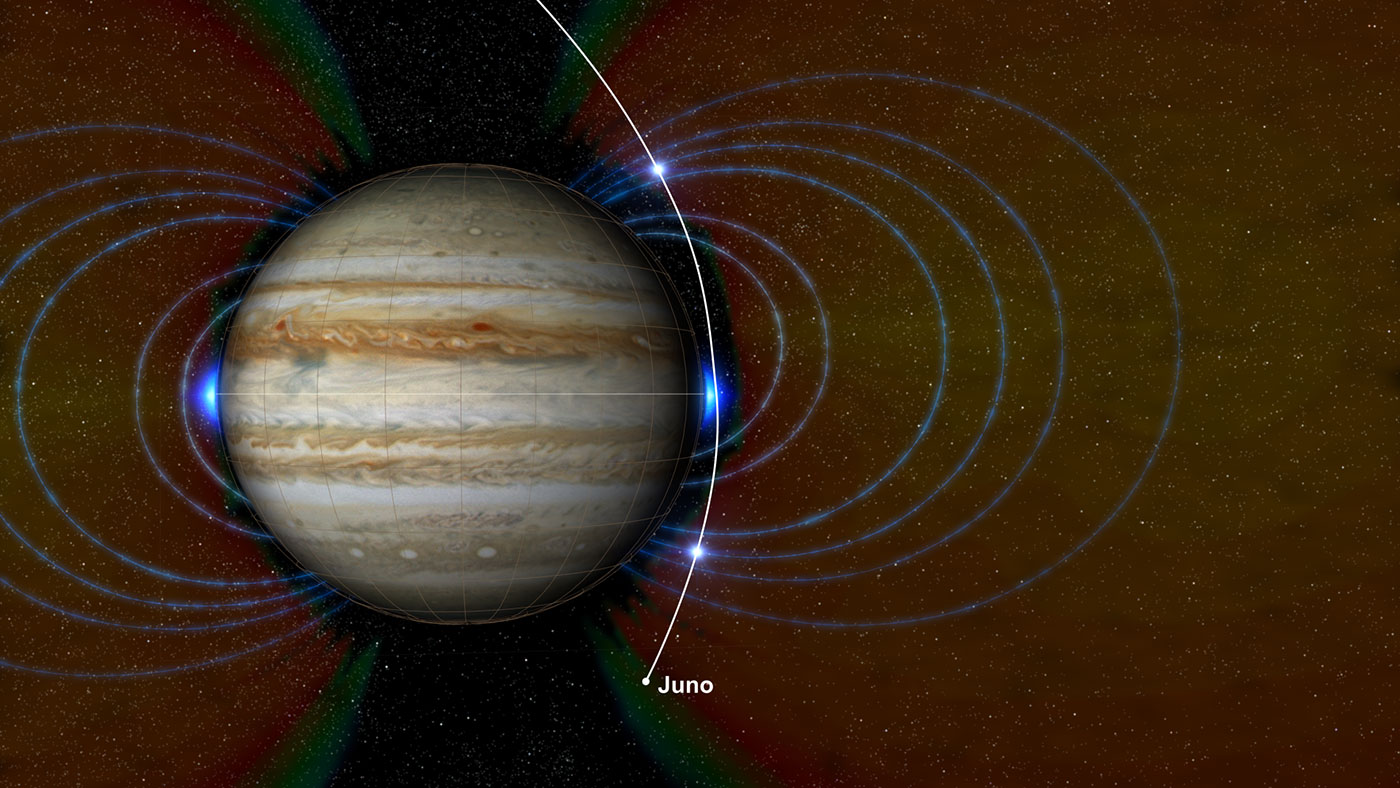
Jupiter: Peering below the clouds
Juno has a set of three instruments designed to help probe beneath the cloud cover and reveal more about Jupiter’s composition. The Gravity Science experiment maps variations in Jupiter’s gravitational field, helping to determine the size of the planet’s core. Another experiment maps the magnetic field three-dimensionally. The third instrument in this group is a microwave radiometer allowing scientists to probe the deep atmosphere for water (oxygen) and ammonia (nitrogen). Together, the data from the three instruments will help scientists understand the core, the origin of the magnetic fields, and the atmospheric layers below the cloud tops. The results may also reveal information about the formation of Jupiter, which has retained hydrogen and helium from the early solar system.
Watching the northern and southern lights on Jupiter
Another set of Juno’s instruments is designed to study the aurora around Jupiter’s poles. These instruments will help reveal how the magnetic fields around the planet interact with the upper atmosphere, especially in the polar regions. The Jovian Auroral Distributions Experiment (JADE) has three sensors to detect electrons in the space Juno travels through. A fourth sensor measures hydrogen, helium, oxygen, and sulfur ions (positively charged), most of which are ejected from volcanoes on Jupiter’s moon Io. The Jupiter Energetic-Particle Detector Instrument (JEDI) measures the interaction of the electrons and ions with Jupiter’s magnetic field. When these particles are channeled along the fields towards the North or South Pole, they crash into the molecules of the upper atmosphere, creating brilliant auroras. The third instrument investigating the magnetic fields of the planet is called WAVES. It measures radio and plasma waves generated in Jupiter’s magnetic fields. It will pay particular attention to activity associated with aurora.
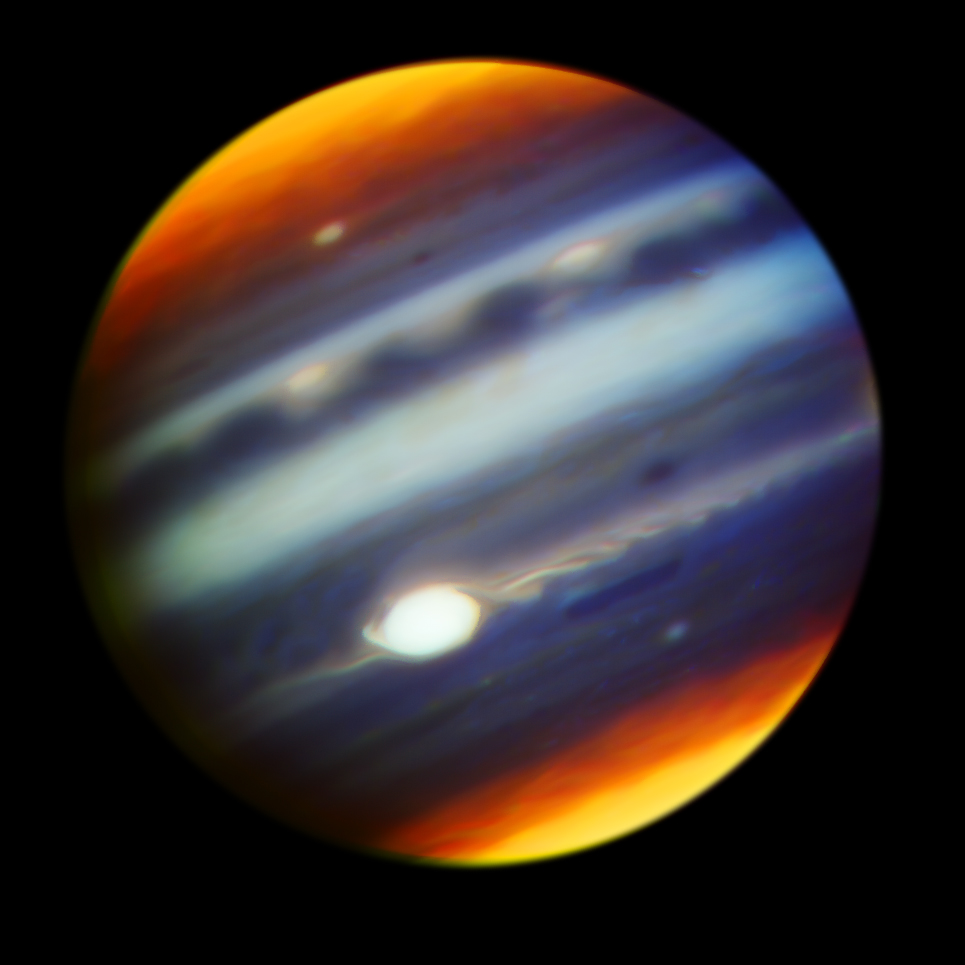
Pics or it didn’t happen
Measuring gravitational variations, plasma or radio waves, magnetic fields, the energy of electrons, or the intensity of ions all produce important data for scientists that they can convert into charts, graphs, and even maps. Humans can deal with large quantities of data very quickly when we have images. I’ve grouped the last three instruments into what I call the “Imaging Experiments” because they take pictures of Jupiter at different wavelengths.
First is the Jovian Infrared Auroral Mapper (JIRAM). JIRAM provides infrared views of Jupiter’s auroras. Infrared wavelengths are perceived by humans as heat. This experiment will also collect data on heat-driven convection in the Jupiter’s atmosphere.
The second of the three imaging packages is JunoCam, which provides visible-light color imaging. JunoCam primarily takes pictures when the spacecraft is close to the planet, approximately 5,000 km above the clouds. NASA expects this instrument will eventually be damaged enough by the high-energy particles around Jupiter that it will have to be shut down before the mission is over. The instrument is designed to last a minimum of seven orbits, but how long it will last is unknown.
Finally, the Ultraviolet Imaging Spectrograph (UVS) will take pictures of Jupiter’s auroras in ultraviolet light. Ultraviolet light isn’t directly visible to humans, but we are familiar with it through black lights illuminating various materials and painful sunburns from being exposed to too much UV light. When UVS’ pictures are combined with data from the JADE and JEDI experiments, scientists expect to gain additional insight into upper atmospheric aurora and the planet’s magnetosphere.
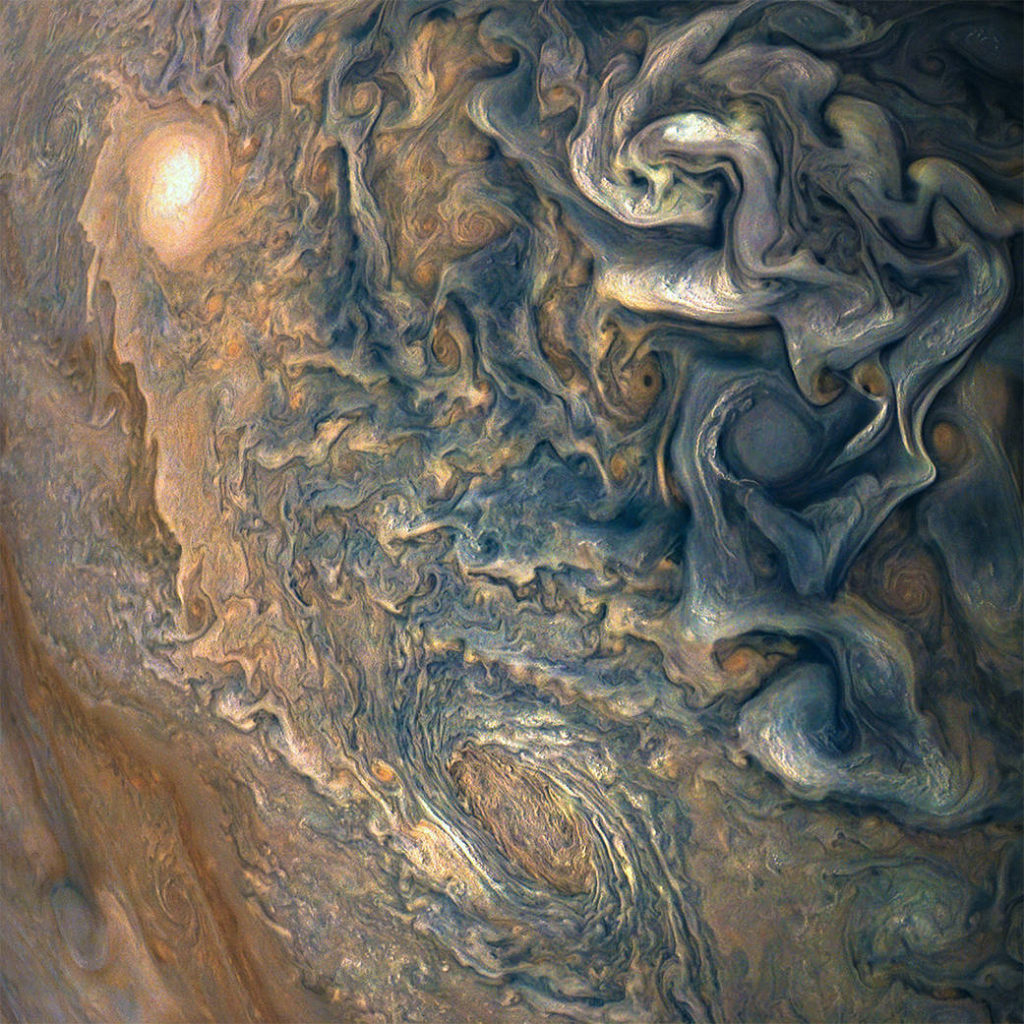
Citizen science and interactive mission information
The JunoCam is obtaining the best pictures ever taken of Jupiter’s polar regions, but NASA intended it also for citizen science outreach. Amateur astronomers and the public are invited to participate in planning which regions and features to photograph. NASA makes the photos public for scientists and citizen scientists to process them too. The camera takes photos in red, green, blue, and near-infrared wavelength. The photos are then stitched together to make color composites. All the image data is accessible and can be processed by anyone here: https://www.missionjuno.swri.edu/junocam/.
NASA has done a great job providing software that lets anyone visualize the Juno mission, learn about the spacecraft, or simulate views while orbiting the planet. Anyone can download a program for Mac or PC from https://eyes.jpl.nasa.gov/eyes-on-juno.html.
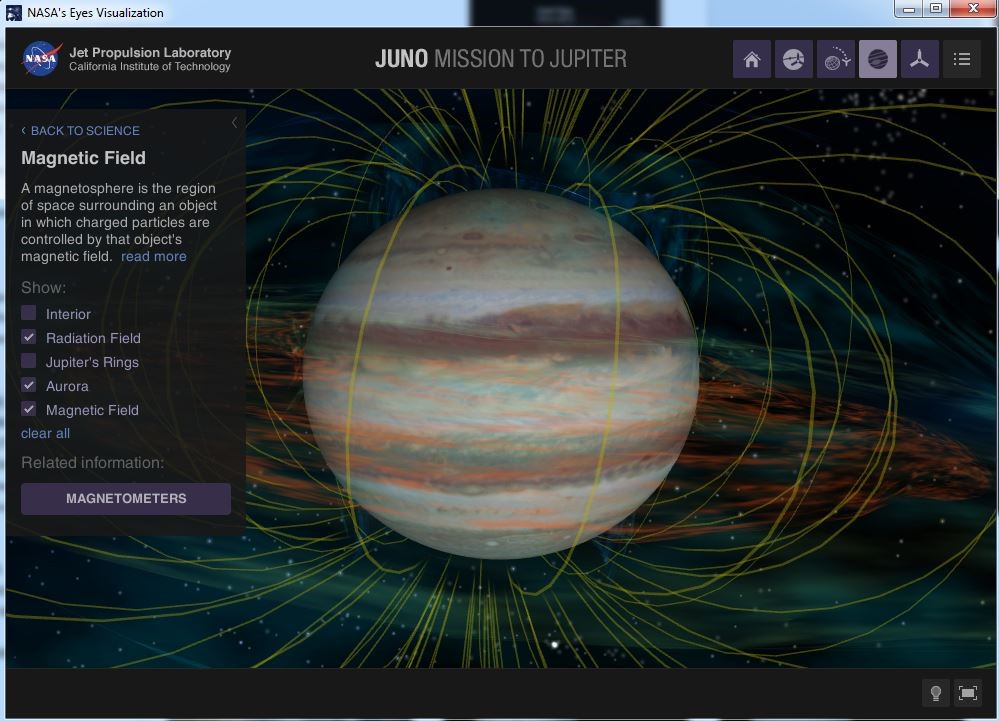
Going out in a blaze
Currently, the mission is projected to end on September 4, 2019. The mission may be extended further provided it continues to be funded. The other factor limiting the mission is how much fuel to maneuver is available. NASA has a planetary protection protocol requiring it to avoid contaminating other potentially life-bearing bodies in the solar system. In this case, the concern is that if the Juno spacecraft is simply left in orbit around Jupiter, it could have its orbit disrupted and contaminate one of the Jovian moons Europa, Ganymede, or Callisto. To prevent this possibility, NASA will deliberately cause the spacecraft to plunge into Jupiter’s atmosphere, causing the spacecraft to burn up during the descent.
Artist concept of Juno. Credits: NASA/JPL-Caltech.
References and Additional Information
[1] There were two 53.5-day capture orbits and two approximately 14-day adjustment orbits after Juno’s orbital insertion prior to the spacecraft being positioned correctly for the science orbits. The science orbits are 14 days long, allowing Juno’s scientific instruments to be used optimally. Some orbits are optimized for microwave experiments, and some for gravitational experiments.
NASA Juno Mission Website: https://www.nasa.gov/mission_pages/juno/main/index.html
NASA Juno Image Gallery: https://www.nasa.gov/mission_pages/juno/images/index.html
Jupiter orbit and radiation belts video: https://youtu.be/GGz_on91pFs (JPLraw – NASA Jet Propulsion Lab)
Greek myth of Zeus, Io, and Hera (Roman names are Jupiter, Io, and Juno) https://www.greekmythology.com/Myths/The_Myths/Zeus’s_Lovers/Io/io.html

